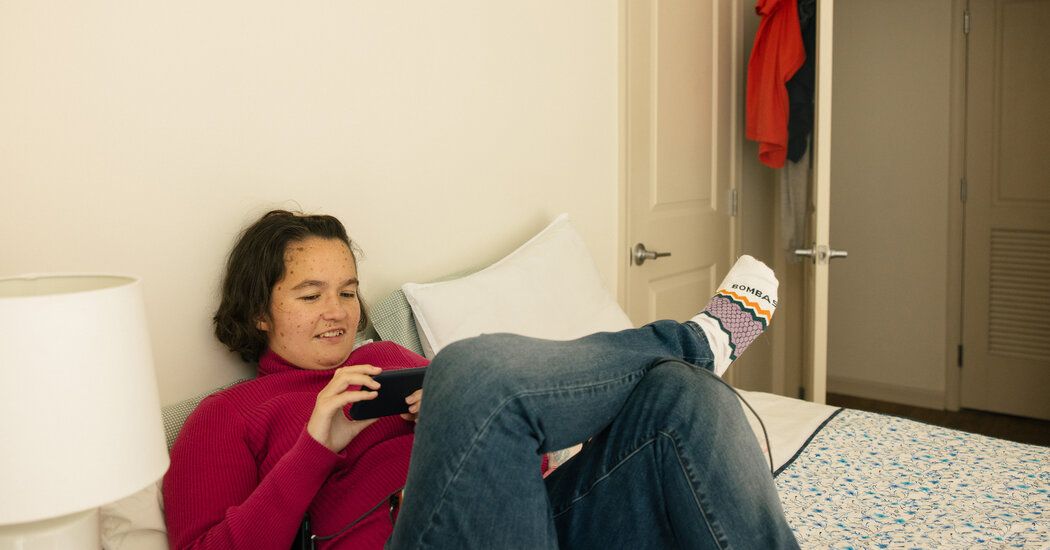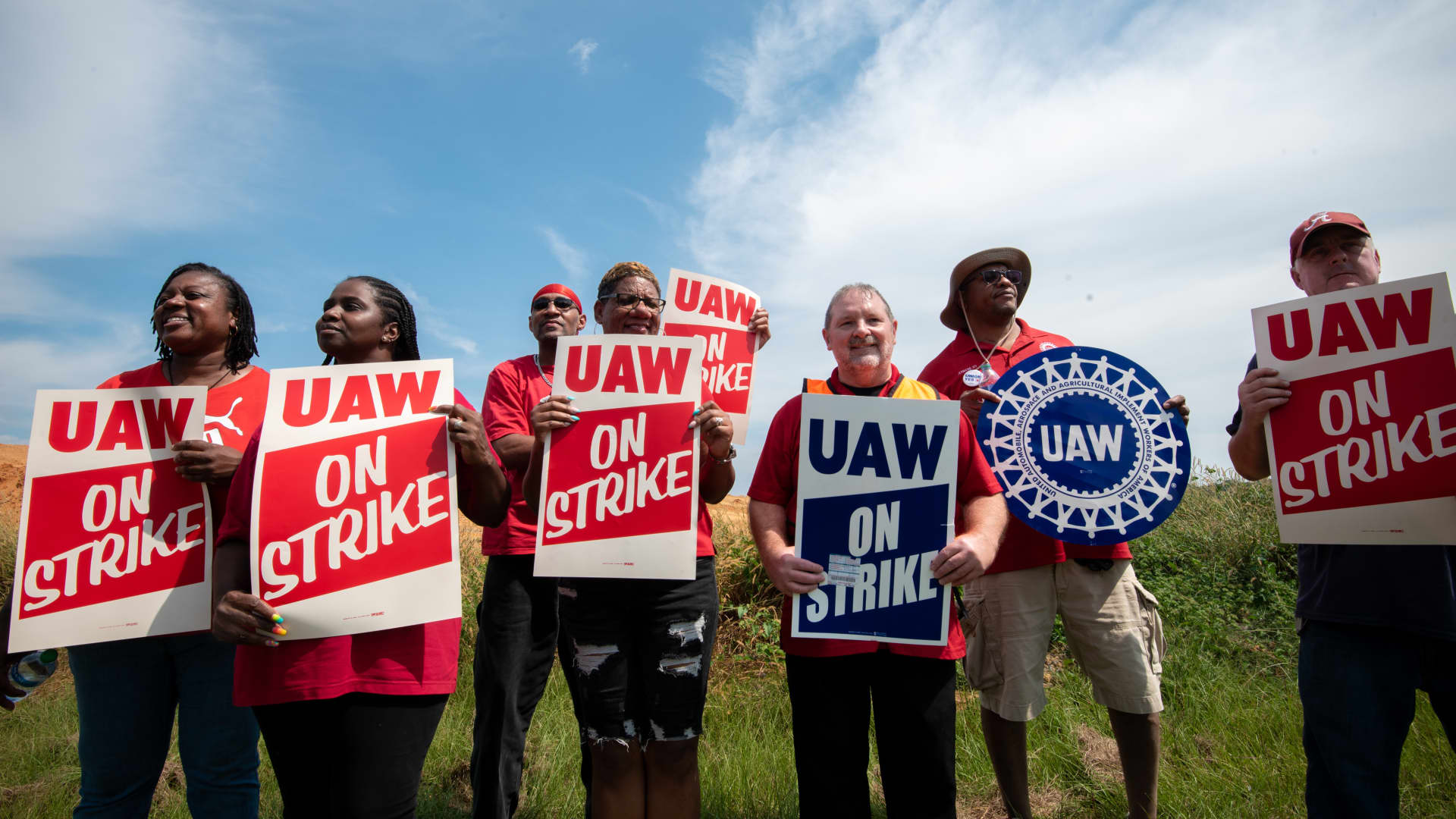Emma Budway, a 26-year-old autistic woman who is mostly nonverbal, had been living with her parents in Arlington, Virginia. She longed to have her own place, but since she earned little income, she could not afford to move. So when the opportunity came for her to move into a two-bedroom apartment in December 2019, she jumped at the chance.
Ms. Budway now lives in Gilliam Place, an affordable housing complex built on property owned by Arlington Presbyterian Church. “My world has gotten so much bigger,” she said.
Ms. Budway is the beneficiary of a growing housing trend: Across the country, faith-based organizations are redeveloping unused or abandoned facilities to help rectify a housing affordability crisis while fulfilling their mission to do good. in the world.
With the exception of a few wealthy churches or synagogues, most religious organizations tend to be land-rich and cash-poor, said Geoffrey Newman, chief executive of Savills, a property services company.
“They are looking at what they can do to alleviate their financial stress and what role real estate plays in that process,” he said. “If the stars align with good properties, a strong real estate market, active developers, favorable zoning and forward-thinking institutional leadership, then there is great potential.”
Still, the challenges are increasing. As more houses of worship venture into affordable housing, they face resistance from congregants, a “not in my backyard” reaction from local residents, and questions about the creditworthiness of lenders. They are also hampered by their lack of experience in real estate development. But, as the Rev. Ashley Goff of Arlington Presbyterian Church put it, religious organizations see the need and feel the urge to “do something bigger than themselves.”
And the need is great. The United States has a shortfall of between 2.3 million and 6.5 million homes, according to Realtor.com, a real estate listings site. A different estimate, from the National Low Income Housing Coalition, an affordable housing advocacy group, suggests there is a shortage of 7.3 million affordable housing units for low-income renters.
Faith-based organizations can make a dent in the housing crisis, said Ramiro Gonzales, board president of Impact Guild, a community development incubator in San Antonio whose Good Acres program aims to help churches maximize their properties for profit. of the community. San Antonio has just over 3,000 acres of religious property, the vast majority of which is underutilized, Gonzales said during a panel discussion last year on the reuse of church property.
That land could be used to house 100,000 families, he said, adding: “It is clearly within the limits of what the church already has to solve this problem on its own.”
Across the country, the story is similar. Up to 100,000 Christian church properties will be sold or repurposed in the next decade, said Mark Elsdon, a minister and developer in Madison, Wisconsin. “That's between a quarter and a third of all churches in the United States,” he added. “Not everyone has property, but even if half did, that's a huge number.”
In California, for example, nonprofit religious organizations and universities own more than 171,749 acres of potentially developable land, according to a recent report by the Terner Center for Housing Innovation at the University of California, Berkeley. San Diego alone has more than 4,000 acres of church property, said Evan Gerber, a developer and consultant for Yes in God's Backyard, a group that seeks to develop affordable housing from religious properties.
And religious institutions owned nearly 800 vacant parcels in the Washington metropolitan region, Peter A. Tatian, a senior fellow at the Urban Institute, wrote in a 2019 report. If multifamily housing could be built on that land, he concluded, it could support construction of up to 108,000 new homes.
Aiming to increase revenue and do good, faith-based organizations are increasingly turning to their unused land and underutilized buildings as a solution for affordable housing. When Ms. Goff arrived at Arlington Presbyterian Church in 2018, Gilliam Place was already under construction.
“Our congregation had begun to ask, ‘What is the point of us?’” Ms. Goff said. “It's a big existential issue, and they had a sense that affordable housing was an issue they could do something about.”
The parishioners decided to raze their house of worship, sell the land for $8.5 million and build something new. Along the way, the church partnered with Arlington Partnership for Affordable Housing, a nonprofit developer. The church now rents 173 affordable homes on Gilliam Place, which houses 500 people, including Ms Budway.
State and local governments are also recognizing the potential to increase the housing stock. Andrew Gounardes, a New York state senator who represents southern Brooklyn, introduced a bill in December that he said would “streamline the process and the way in which religious institutions that want to contribute to solving the housing crisis in the state will be able to develop affordable housing on their property.”
Similar bills were passed in California in October and in Seattle in 2019, and Virginia lawmakers are drafting a bill based on California's.
Regardless of state laws, projects often face decisive decisions at the local level. Neighborhood acceptance is a small step along the way, said the Rev. David Bowers, vice president of the faith-based development initiative at Enterprise Community Partners, a national nonprofit developer. “There is NIMBYISM, zoning approvals,” he said. “It's the nature of the beast.”
Then there is the question of financing. Banks “are hesitant to do business with churches for fear of nonpayment,” said Bishop RC Hugh Nelson, senior pastor of the Ebenezer Urban Ministry Center in Brooklyn, who worked with Brisa Builders Corporation on Ebenezer Plaza, a project that includes 523 affordable apartments, 43,000 square feet of sanctuary and ministry space, and 21,000 square feet of commercial space in Brownsville.
And the development process itself requires endurance. Ebenezer Plaza took nearly a decade: The church had raised enough funds to purchase two city blocks in Brownsville in 2011 for $8.1 million, but the project suffered delays, including the purchase of 22 existing tenants, environmental remediation and a rezoning. Construction workers began construction in 2018 and residents were finally able to move in three years later.
IKAR, a Jewish community in West Los Angeles, is in the process of creating 60 apartments for formerly homeless seniors. “We're in year 5 and by the time we're done it could be six years,” said Brooke Wirtschafter, community organizing director for IKAR. “This is not an unusual timeline.”
Additionally, “unscrupulous” people seeking deals may target religious organizations, assuming these organizations are not experts in real estate, Bishop Nelson said, adding that he had heard horror stories from other pastors. Early in the development of Ebenezer Plaza, Bishop Nelson returned to school to attend an executive program focused on real estate development at Fordham University.
Richard King, 52, moved into a new apartment in Ebenezer Plaza last year after living on the streets and in shelters (where he won a housing lottery). He had been working various jobs in a distribution warehouse, but was injured in a motorcycle accident and uses a wheelchair.
In her new one-bedroom apartment, “my nursing assistant and my doctors can come see me every day,” King said. “Otherwise I would have to be in a nursing home and I don't want that.”
The new communities are expected to increase neighborhood value and bring positive changes to residents.
“Once our property was rezoned, all the properties around us increased in value,” Bishop Nelson said of Ebenezer Plaza. And church members clean up around the block, he added. “We want that space to reflect what Brownsville could look like when local people take ownership of their community,” he said.
For religious organizations, this “makes radical common sense,” Bowers said. “In every community there are places of worship,” she said. “They often have land in a sea of need: food deserts, affordable housing deserts. “If we can bring these organizations together, we can make change.”










